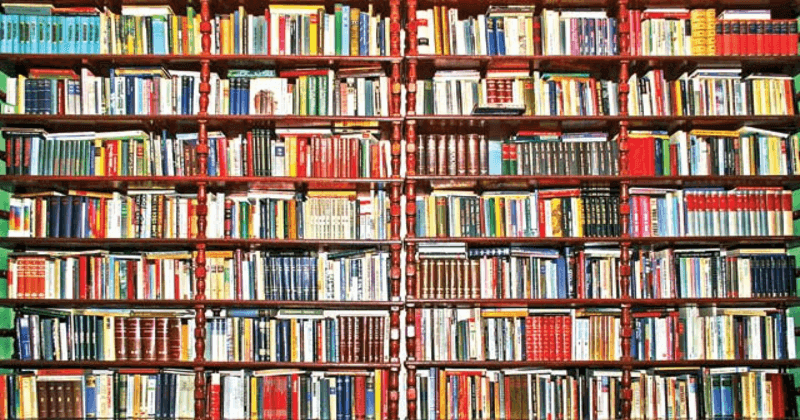
The creative decisions and flagship programmes of the NDA-II government have found its place in the New NCERT textbooks.
An analysis by the Indian Express of 25 textbooks for classes 6 to 10, revealed that of the 13 spotted references majority were devoted to the Swachh Bharat Abhiyan, followed by Namami Gange Programme, Digital India, Beti Bachao Beti Padhao, Pradhan Mantri Kaushal Vikas Yojana on skilling, and demonetisation. The NCERT books had been included with the flagship schemes of the UPA government like NREGA(now known as MNREGA) in Class 11 Economics textbook, the National Food Security Act 2013 in Chapter 4 of the class 9 Economics textbook and Right to Information Act in Chapter 5 of the Class 10 Political Science textbook. But unlike in the NDA-II government, there weren’t multiple references made to the same scheme in different textbooks. The NCERT has now made the additions to the Geography, Science, Political Science, Economics and English books as part of the textbook review, the first since 2007.
See also:India Transforming : Welcome to the New India with AI enabled Defense Equipment
The Key Changes
1.The introduction of Swachh Bharat Scheme in 5 textbooks. A chapter on human life in the tropical and subtropical regions in the Class 7 Geography textbook is added with a small box which states,“To accelerate the efforts to achieve universal sanitation coverage and to put fours on sanitation, the Prime Minister of India launched the ‘Swachh Bharat Mission’ on 02nd October 2014.”
Chapter 6 of the Class 6 Geography book reads: “Healthy mind lives in the healthy body and for a healthy body clean environment particularly clean water, air and hygienic surroundings are pre-requisites. Swachh Bharat Mission, a government of India programme aims to achieve all these for people.” This chapter is on the major landforms of the Earth such as mountains, plateau and the plains. The reference to the NDA-II government’s cleanliness mission has been added to a section titled ‘Landforms and the People’.
In class 6 science book, Swachh Bharat Mission makes an appearance in the chapter titled ‘Garbage In, Garbage Out’.Swachh Bharat Mission is also found in Class 6 Political Science textbook in the chapter on urban administration and in chapter 18 on wastewater treatment in the Class 7 Science textbook.
2.NDA-II government’s classic move of ‘Demonetisation’ is mentioned in about 260 words in the prelude to the chapter titled ‘Money and Credit’ in Class 10 Economics book.
“In India, during November 2016, currency notes in the denomination of Rs. 500 and Rs. 1,000 were declared invalid. People were asked to surrender these notes to the bank by a specific period and receive new Rs 500, Rs 2,000 or other currency notes. This is known as ‘demonetisation’. Since then, people were also encouraged to use their bank deposits rather than cash for transactions. Hence, digital transactions started by using bank-to-bank transfer through the internet or mobile phones, cheques, ATM cards, credit cards, and Point of Sale (POS) swipe machines at shops. This is promoted to reduce the requirement of cash for transactions and also control corruption. Students could be asked to debate on the process and the impact of demonetisation. They can be guided to make a collage of the major areas where people use digital and cash transactions which are legitimate and legal,” the chapter reads.
3. Digital India has found mention in the Class 10 Geography textbook. In the 7th chapter ‘Lifelines of National Economy’ earlier had a small trivia box which asked to make the comparison of mobile connections in our country with any other country. Now it reads,“Digital India is an umbrella programme to prepare India for a knowledge-based transformation. The focus of Digital India Programme is on being transformative to realise – IT (Indian Talent) + IT (Information Technology) = IT (India Tomorrow) and is on making technology central to enabling change.”
The slogan IT+IT=IT was used by Prime Minister Narendra Modi on May 10, 2017, at the launch of the computerised case management system of the Supreme Court.
Digital India is also mentioned in Chapter1 of Class 9 English textbook. The setting for the chapter is a future world where schools and books in the current form don’t exist. The government’s efforts to “digitalise cash transactions to buy things and pay bills” are introduced to the students in the exercise section. They are also asked to do an opinion poll on the use of digital services in their daily life.
4. Namame Gange has found mention in three textbooks-Class 10 Science textbooks, Class 7 Geography book and Class 8 Science book. In Class 10 science textbooks, Namame Gange is discussed in Chapter 16 (Sustainable Management of Natural Resources).In Class 7 geography textbook in Chapter 8(Human-Environment Interactions — The Tropical and the Sub-tropical Regions) and in Class 8 Science Textbook in the chapter on air and water pollution.
5. Beti Bachao, Beti Padhao and Pradhan Mantri Kaushal Vikas Yojana have been added to the Class 7 political science textbook and Class 8 geography textbook, respectively.
In the 182 textbooks for Class 1 to Class 12, NCERT has made roughly 1334 changes which include additions, correction, and data update. Maximum Changes(573) have been made to Science books, then social science(316) and after that Sanskrit textbooks(163).

Post Your Comments